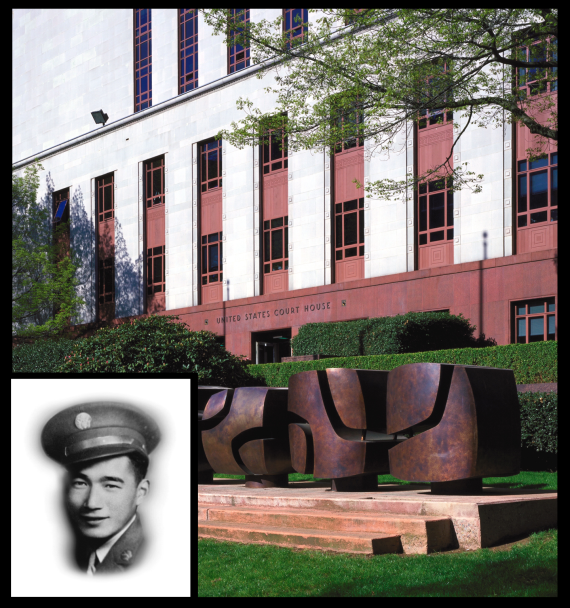The Hero Behind the William Kenzo Nakamura United States Courthouse

By Lauren Isaksen
On July 4, 1944, when Private First Class William Kenzo Nakamura drew his last breath, after saving his platoon from machine gun fire in Castellina, Italy, his young life had not only wove a rich tapestry of the Asian-american experience, but one that defined the American spirit.
His heroic stand against enemy fire in service to his men at arms and his country during WWII posthumously earned Nakamura the Army’s second-highest decoration, the Distinguished Service Cross. A 1990’s review of service records saw that honor elevated to the Medal of Honor, presented to his family on June 21, 2000, by President Clinton.
Later that fall the United States House and Senate both voted unanimously to pass legislation that officially named the 1940’s federal courthouse on 5th Avenue in Seattle, Washington, the William Kenzo Nakamura United States Courthouse.
But the threads of Nakamura’s life history distinguish him even more as a hero, since he volunteered to serve America, not near his home in Seattle’s International district, but behind the wire fence of the Minidoka War Relocation Center in Jerome County Idaho.
The Japanese internment camp housed Nakamura, his two sisters, father, and brother starting in March of 1942 as they still grieved the January death of their mother from cancer.
At its peak, Minidoka interned 9,397 Japanese Americans mostly from Oregon, Washington, and Alaska.
Nakamura served as part of the all-Nisei (second generation Japanese-American) 442nd Regimental Combat Team. For its size, the 14,000 member unit earned the title of most decorated unit in U.S. Military history.
In a truly Pacific Northwest story, Nakamura’s parents settled in Seattle’s Japantown (now the International District) where he was born in 1922. He attended Washington Middle School and graduated from Garfield High School. Nakamura attended the University of Washington and lived in the University Students Club, a fraternal association for Japanese-American students.
Through struggle, grit, determination, and bravery Nakamura forged his own American story.

 U.S. General Services Administration
U.S. General Services Administration